Chapter: 11th Textiles and Dress Designing : Chapter 1 : Introduction to Clothing
Purposes / Need for Clothing
PURPOSES / NEED FOR CLOTHING
Clothing is a basic cover for human body.
Clothing varies based upon sex, climatic conditions, standard of living,
occupation, religion, nationality and personal liking.
The major reasons for using clothing are
discussed below:
Protection
·
Clothes protect human skin from cli-matic changes
like rain, (Figure 1.1), snow, wind,
extreme cold and heat conditions.
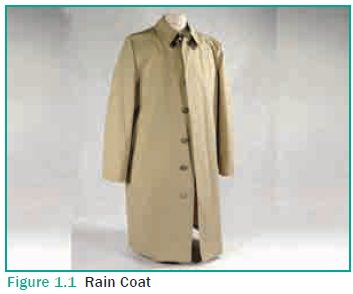
·
Clothes helps to absorb sweat from the body,
prevents one from sudden chillness and acts as a barrier between the human body
and accidental burns, scratches and rough surfaces.
·
Clothes are a life saving insulating gar-ment for
people living in extreme cold and hot climates.
Example: Eskimos, keep them-selves warm
by using fur clothes which traps warm air from the body and does not allow cold
air from external environ-ment to touch the body.
Safety
Some sports and occupation requires clothes which
can provide safety from accidents. Examples:
·
Protective pads (Figure 1.2), hel-mets (Figure
1.3) used in football and cricket.
·
Asbestos clothing for fire fighters.
·
Bullet proof vests for police and military men
·
Florescent orange vests for road workers.
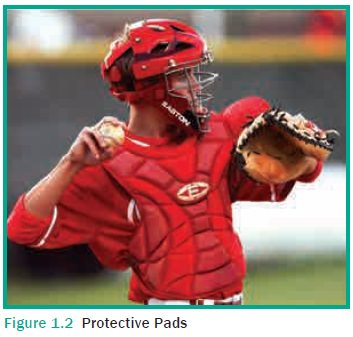

Sanitation
Special clothes and accessories are worn
regularly by people in specific occupa-tions for sanitation purposes.
Examples: Doctors (Figure
1.4), Nurses, sanitary cleaners and people working in food
production institutions wear uniforms, gloves, face masks, caps to prevent
contamination by germs.

Modesty
Covering the body in a proper way is considered
as modesty. This varies from people to people, nation to nation.
Example : A sleeveless, low neck top
and highly decorated skirt may not be considered as a modest for an office wear
(Figure 1.5).

Identification
Most of the companies, schools, institu-tions and
specific jobs (Doctors) have a particular dress code. This helps one to be
identified with their work place, or area where they belong.
Example: Doctor’scoat (Figure1.6), worn above the normal
dress helps one to identify the doctors.
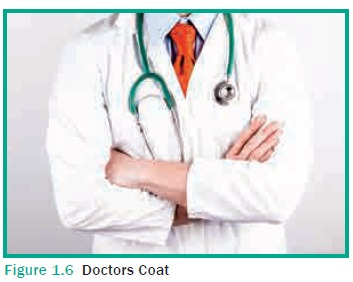
Uniforms
One of the easiest ways to identify a group is
through uniform. Uniforms are related to jobs like police force, fire
department and military. Athletic teams and sports person in a team wear
uniforms of particular colour. People working in the service occupations such
as, restaurant, airlines, employees wear special uniforms (Figure 1.7).
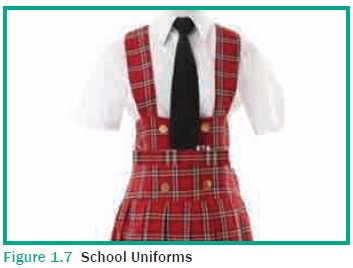
Tradition
Tradition has been followed in all coun-tries
with reference to clothing. Due to traditional reasons specific colours and
dresses are used in different occasion.
Example: White or black colour garment
for marriages and funerals, black robes, cowl and mortarboard caps with tassels
used by graduates (Figure 1.8).

Insignias
Patches, badges or emblems pinned or machined to
jackets and dresses is a sym-bol of insignias.
Examples: National Service Scheme (N.S.S),
National Cadet Corps (N.C.C) (Figure 1.9),
badges. Even in school and sports T-shirts,
insignia is in the form of school first letter or company for whom the team is
playing.

Status
Clothing is a symbol of status also. It helps to
identify the position of an individual. These clothings and accessories are
more expen-sive with recent designs and styles.
Example: Clothing and accessories like
the crown used by queens and kings (Figure
1.10).
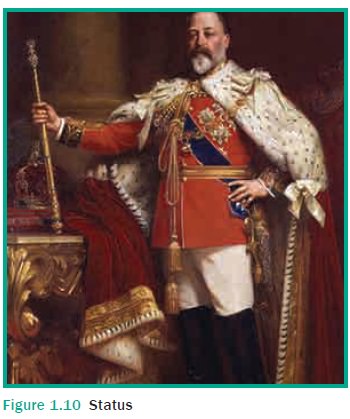
Decoration
Adornment or decoration is considered important
by every individual. Clothing can enhance one’s look through decoration of
garments and use of accessories. Even the cave men decorated themselves with
paint-ing using colours from berries and tattooing their bodies with sharp pins
or needles.
Related Topics